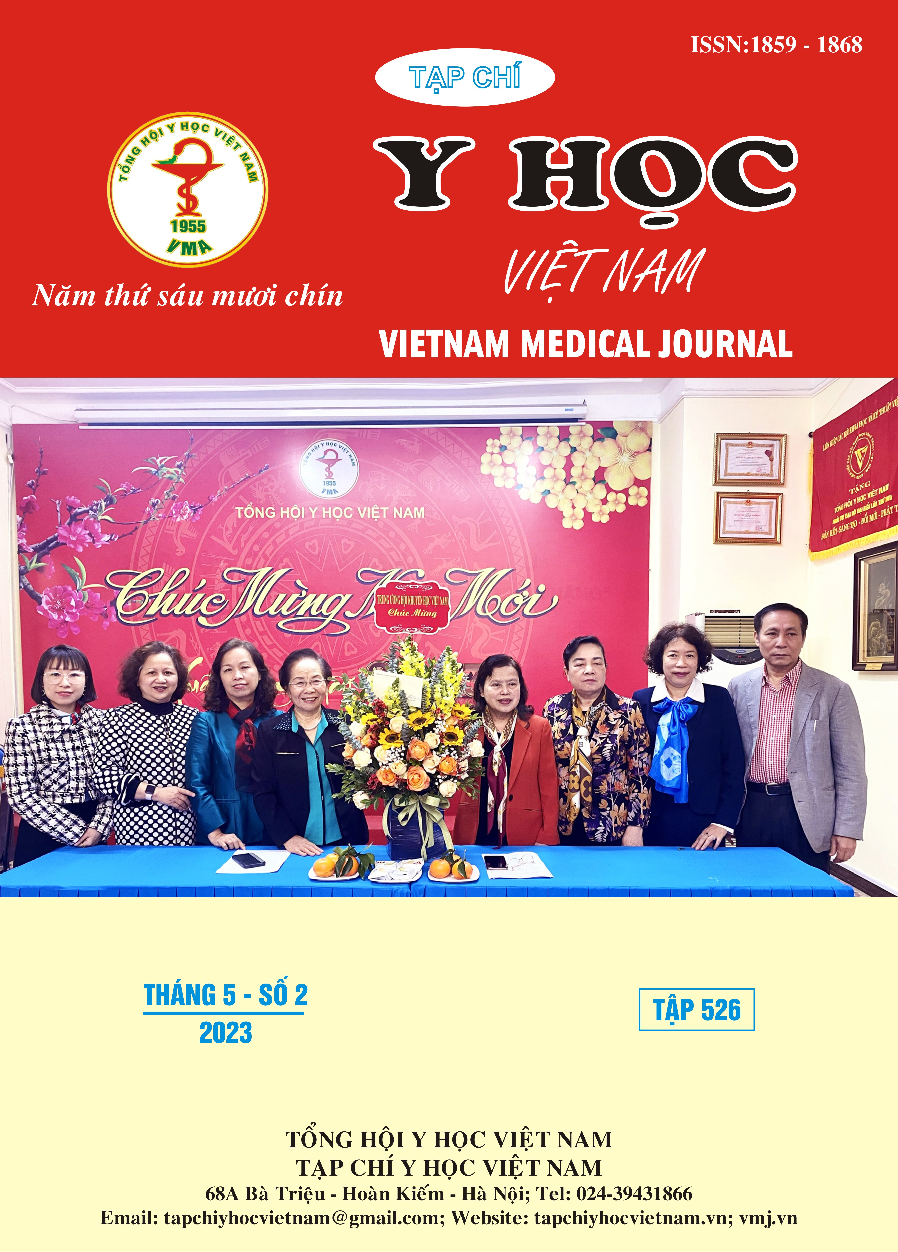SOME CLINICAL CHARACTERISTICS OF ACUTE RESPIRATORY DISTRESS IN CHILDREN ACCORDING TO BLOOD GASES AT THE INTENSIVE CARE AND ANTI-TOXIC DEPARTMENT, NGHE AN OBSTETRICS AND PEDIATRICS HOSPITAL
Main Article Content
Abstract
Objectives: To describe the clinical characteristics of acute respiratory distress in children according according to blood gases at the Intensive Care and Anti-toxic department of the Nghe An Obstetrics and Pediatrics Hospital. Research subjects and methods: prospective description, convenience sampling on 102 patients diagnosed with acute respiratory distress in the Intensive Care and Anti-toxic department. Results: Patients with respiratory distress type 1 accounted for 57.8%, type 2 accounted for 27.5%, type 3 accounted for 14.7%. Regarding respiratory symptoms, respiratory distress types 1, 2, 3 all have tachypnea and chest indrawing, in which type 1 often has signs of moist rales in the lungs, type 2 has abnormal breathing sounds. Most types of respiratory distress have symptoms of tachycardia with the rates from 89.3% - 100%. Signs of altered consciousness ranged from 33.3% to 46.4%. The most common respiratory distress in bronchopneumonia patients is type 1, followed by type 2 and type 3. 80% of cases have cardiovascular disease and 60% of cases of acute pulmonary edema have respiratory distress of type 1. Conclusion: Type 1 respiratory distress accounted for the highest rate. Clinical manifestations of respiratory distress type 1 are mainly moist rales in the lungs, type 2 are mainly abnormal breathing sounds. Types of respiratory distress primarily affect the cardiovascular and nervous systems with tachycardia and altered consciousness. In terms of causes, acute respiratory distress due to respiratory diseases accounts for the highest rate, in which bronchopneumonia is the most common cause.
Article Details
References
2. Judith Ju-Ming Wong, Mark Jit, Rehena Sultana, et al (2019). Mortality in Pediatric Acute Respiratory Distress Syndrome: A Systematic Review and Meta-Analysis. J Intensive Care Med, 34(7):563-571.
3. Laura R A Schouten, Floor Veltkamp, Albert P Bos, et al (2016). Incidence and Mortality of Acute Respiratory Distress Syndrome in Children: A Systematic Review and Meta-Analysis. Crit Care Med, 44(4):819-29.
4. Karande S, Murkey R, Ahuja S, et al. (2003). Clinical profile and outcome of acute respiratory failure. Indian J Pediatr, 70(11), 865-869.
5. Trần Quỵ, Trần Thị Hồng Vân (2009). Suy hô hấp cấp tính ở trẻ em. Bài giảng Nhi Khoa tập 1, Nhà xuất bản Y học, Hà Nội, 416-421.
6. Trần Kiêm Hảo, Phạm Kiều Lộc. (2014). Rối loạn khí máu trong suy hô hấp cấp tính ở trẻ em. Tạp chí Y học Việt Nam, 447(2), 83-88.
7. Phạm Thị Quế, Phạm Văn Thắng (2018). Đặc điểm lâm sàng, nguyên nhân, phân loại suy hô hấp cấp ở trẻ em theo khí máu.Tạp chí Khoa học ĐHQGHN: Khoa học Y Dược, 34 (2), 105-109.
8. Nagaram PP (2021). Clinical Profile and Outcome of Acute Respiratory Failure in Children: A Prospective Study in a Tertiary Care Hospital, Nellore, Andhra Pradesh. International Journal of Health and Clinical Research, 2021;4(3):187-190.
9. Nguyễn Quang Hưng, Lê Thanh Hải (2012). Phân loại nguyên nhân suy hô hấp cấp ở trẻ em tại khoa cấp cứu bệnh viện Nhi Trung ương. Tạp chí Y học Việt Nam, 381 (2), 52-56.


